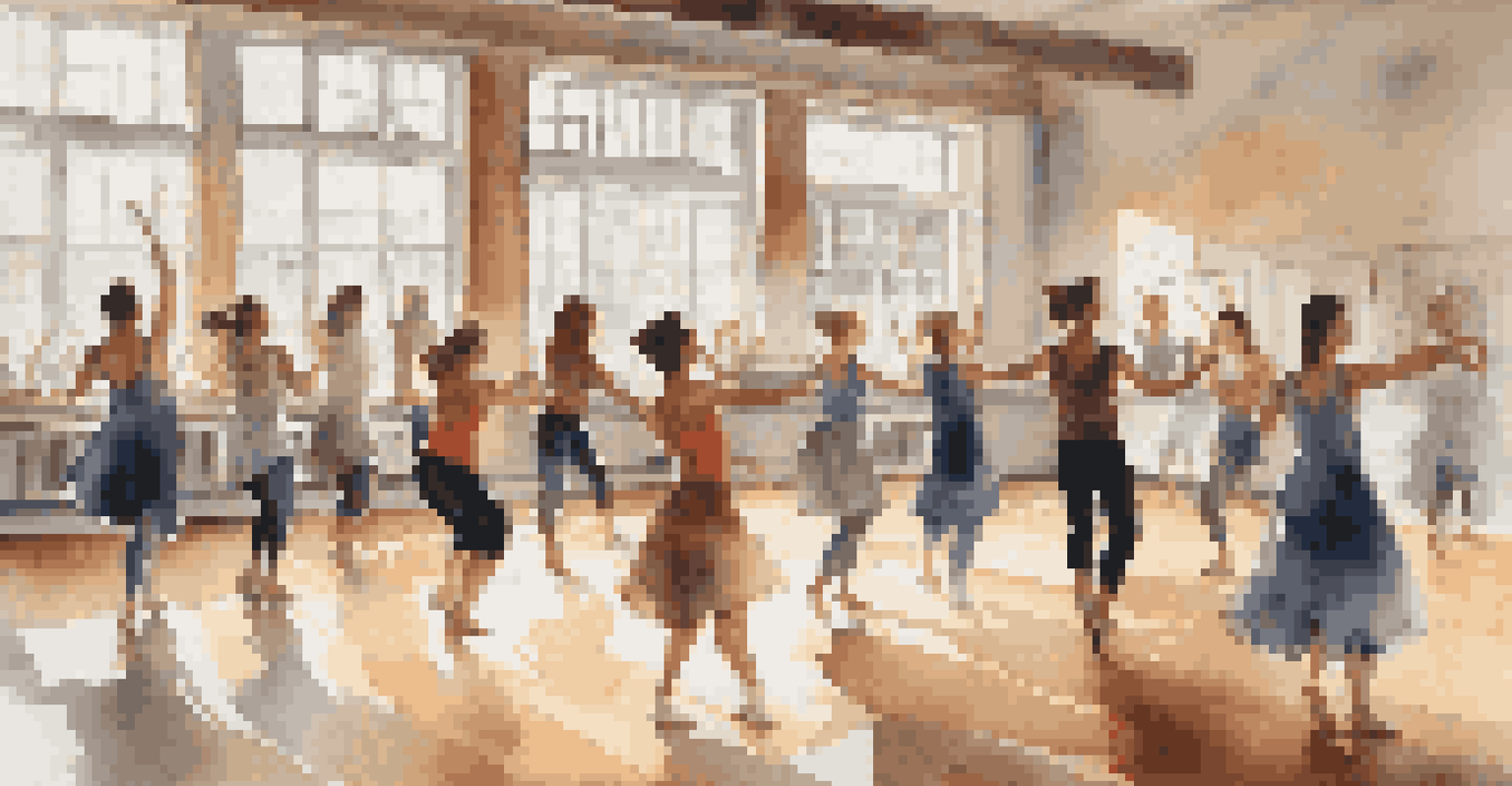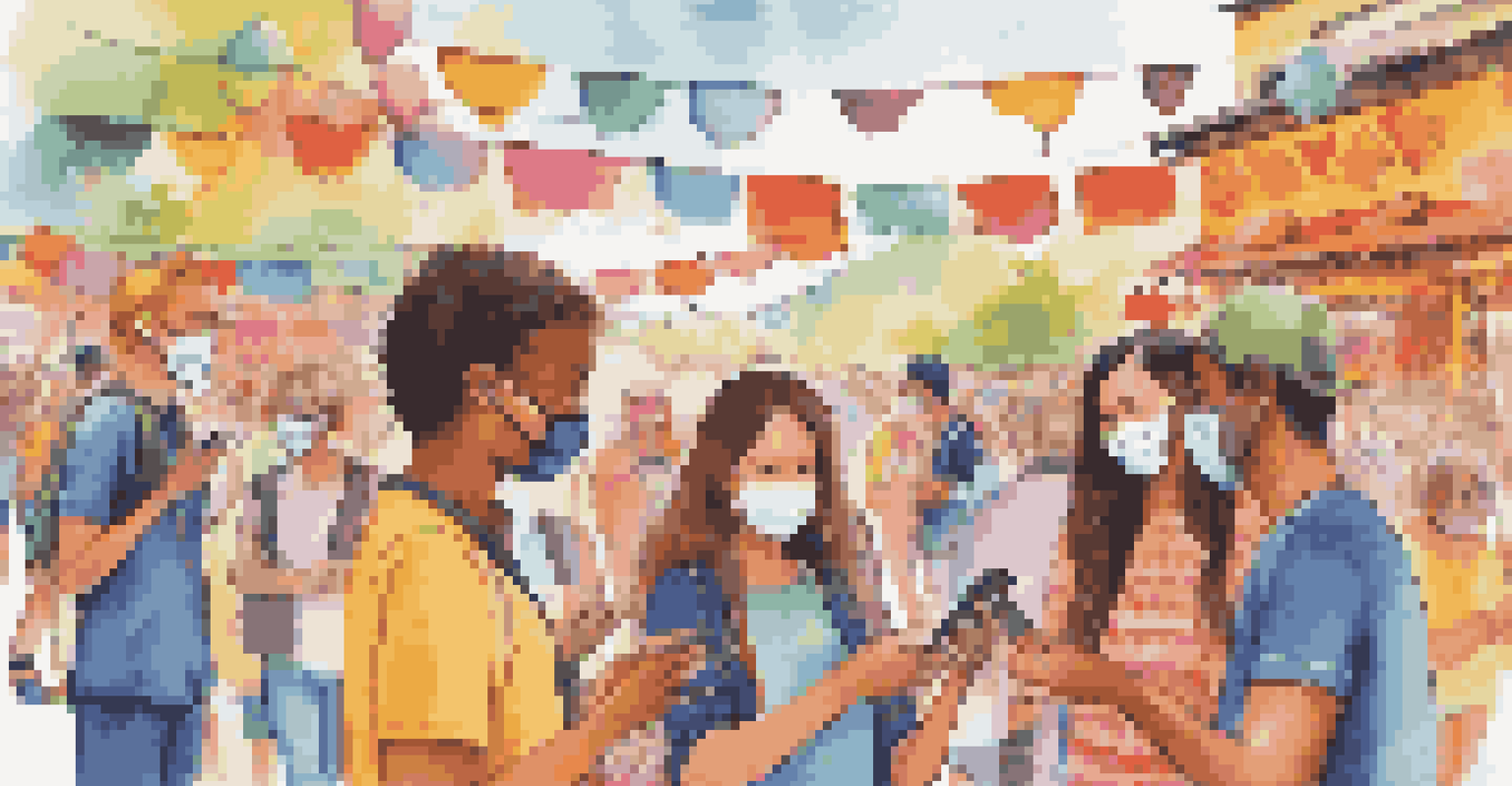The Future of Dance Festivals in a Post-Pandemic World

The Resurgence of Dance Festivals Post-COVID
After a long hiatus due to the pandemic, dance festivals are beginning to make a comeback. This resurgence is fueled by a collective yearning for connection and community that many people have missed. As restrictions lift, organizers are working diligently to create safe and memorable experiences for attendees. It's a moment of hope and revitalization for both artists and fans alike.
Dance festivals are about bringing people together to celebrate shared passions and experiences.
With the world having adapted to new norms, festivals are embracing hybrid formats that combine in-person and virtual experiences. This approach not only caters to local audiences but also allows fans from around the globe to participate. By offering live-streaming options, festivals can reach a wider audience and create a sense of inclusivity. This evolution could redefine how we experience dance festivals in the future.
Moreover, the return of these events brings with it a renewed appreciation for live performances. Many festival-goers are eager to support their favorite artists and discover new talent after months of isolation. This heightened enthusiasm is likely to create a vibrant atmosphere at future festivals, making them more memorable than ever.
Health and Safety: A New Priority for Festivals
In light of the pandemic, health and safety have become paramount concerns for dance festivals. Organizers are now implementing enhanced protocols to ensure the well-being of attendees, artists, and staff. These measures can include mandatory health screenings, increased sanitation stations, and even capacity limits to allow for social distancing. The goal is to create a safe environment where everyone can enjoy the music and dance without fear.

Additionally, many festivals are adopting contactless technology to streamline entry and reduce physical interactions. Features such as mobile ticketing and cashless transactions help minimize contact and enhance the overall experience. This tech-savvy approach not only addresses safety concerns but also appeals to a younger, more digital-savvy audience.
Festivals Embrace Hybrid Formats
Dance festivals are adopting hybrid formats that blend in-person and virtual experiences, allowing wider participation and inclusivity.
As festivals prioritize health and safety, they also have the opportunity to educate attendees about responsible behavior. By promoting awareness of health guidelines and encouraging vaccinations, the dance community can foster a culture of care and respect. This commitment to safety will likely become a defining characteristic of future festivals.
Sustainability: An Increasingly Important Focus
In a post-pandemic world, sustainability is taking center stage at dance festivals. With the environmental impacts of large gatherings under scrutiny, organizers are seeking eco-friendly solutions. This shift means reducing waste, promoting recycling, and even selecting sustainable venues to host events. It's about creating a festival experience that is not only enjoyable but also responsible.
The future of dance festivals is not just about the music and dance; it's also about caring for our planet.
Many festivals are now partnering with local vendors and artisans to support the community and reduce carbon footprints. By sourcing food, merchandise, and services locally, they can cut down on transportation emissions and foster a sense of community. This practice not only benefits the environment but also enriches the festival experience, as attendees get to enjoy local flavors and crafts.
Moreover, attendees are becoming increasingly aware of their environmental impact and are looking for festivals that share their values. This demand for sustainability can drive more festivals to adopt greener practices, creating a ripple effect throughout the industry. In essence, the future of dance festivals is not just about the music and dance; it's also about caring for our planet.
Diversity and Inclusion: Expanding Festival Culture
As the dance festival landscape evolves, so too does the conversation around diversity and inclusion. Organizers are recognizing the importance of representing a wide array of voices and backgrounds in their lineups. This shift not only enriches the festival experience but also encourages a more inclusive atmosphere where everyone feels welcome. Festivals can become a powerful platform for underrepresented artists to showcase their talents.
Additionally, fostering diversity goes beyond the stage; it also extends to the festival staff and audience. By actively seeking diverse perspectives and experiences, festivals can create programming that resonates with a broader audience. This commitment to inclusivity can help dismantle barriers and encourage more people to participate in the dance community.
Health and Safety Take Priority
Post-pandemic, dance festivals are prioritizing health and safety through enhanced protocols and contactless technology.
As we move forward, the push for diversity and inclusion will likely shape the future of dance festivals significantly. Attendees are increasingly seeking events that reflect their values and promote social responsibility. This expectation can lead to a transformation in how festivals curate their offerings and engage with their communities.
Technology's Role in Shaping Festival Experiences
Technology has always played a role in enhancing festival experiences, but its importance has skyrocketed in the post-pandemic world. From ticketing to live streaming, technology is facilitating a smoother and more engaging experience for attendees. Many festivals are now leveraging apps to help attendees navigate schedules, find food vendors, and connect with friends. This tech integration not only enhances convenience but also creates a more interactive experience.
Social media platforms are also playing a vital role in amplifying the festival experience. Artists and attendees alike can share their moments in real-time, creating a sense of community and excitement online. This online engagement can enhance the festival atmosphere, as fans connect with each other and the artists before and after the event. It's a way to keep the energy alive long after the last performance.
Moreover, the use of augmented and virtual reality is beginning to emerge in the festival scene. These technologies can offer immersive experiences that transport attendees to new worlds, whether they’re at home or on-site. As we look to the future, technology will continue to redefine how we experience and engage with dance festivals.
The Evolution of Lineups and Programming
In the wake of the pandemic, the evolution of festival lineups and programming is becoming increasingly apparent. With a focus on creating unique experiences, organizers are curating diverse acts that cater to a range of tastes and interests. This approach not only keeps the festival fresh but also introduces attendees to new genres and styles they may not have considered before.
Moreover, there's a growing trend towards featuring local talent alongside established artists. This strategy not only supports the local music scene but also enriches the festival experience for attendees. By showcasing a mix of familiar faces and emerging talent, festivals can create a dynamic atmosphere that keeps audiences engaged and excited.
Focus on Sustainability Grows
Organizers are increasingly incorporating eco-friendly practices and local partnerships to promote sustainability at dance festivals.
As dance festivals evolve, the inclusion of interactive elements is also becoming more popular. Workshops, panels, and Q&A sessions with artists can provide deeper insights into the dance world, allowing fans to connect with their favorite performers in new ways. This shift towards a more holistic festival experience reflects a desire for meaningful engagement and connection.
Building Community in a New Era
One of the most significant impacts of dance festivals is their ability to foster community. In a post-pandemic world, this sense of community is more important than ever. Festivals are not just about the music; they are about bringing people together to celebrate shared passions and experiences. As we navigate this new landscape, creating spaces for connection will be vital.
Many festivals are now prioritizing community-building initiatives, such as workshops and meet-and-greet sessions. These opportunities allow attendees and artists to interact on a personal level, fostering a sense of belonging. By creating these connections, festivals can cultivate a loyal fan base that extends beyond the event itself.

Looking ahead, the emphasis on community will likely shape how festivals operate. Organizers may seek feedback from attendees to create more inclusive and engaging experiences. This dialogue between organizers and attendees can lead to a vibrant festival culture that reflects the values and desires of the community.